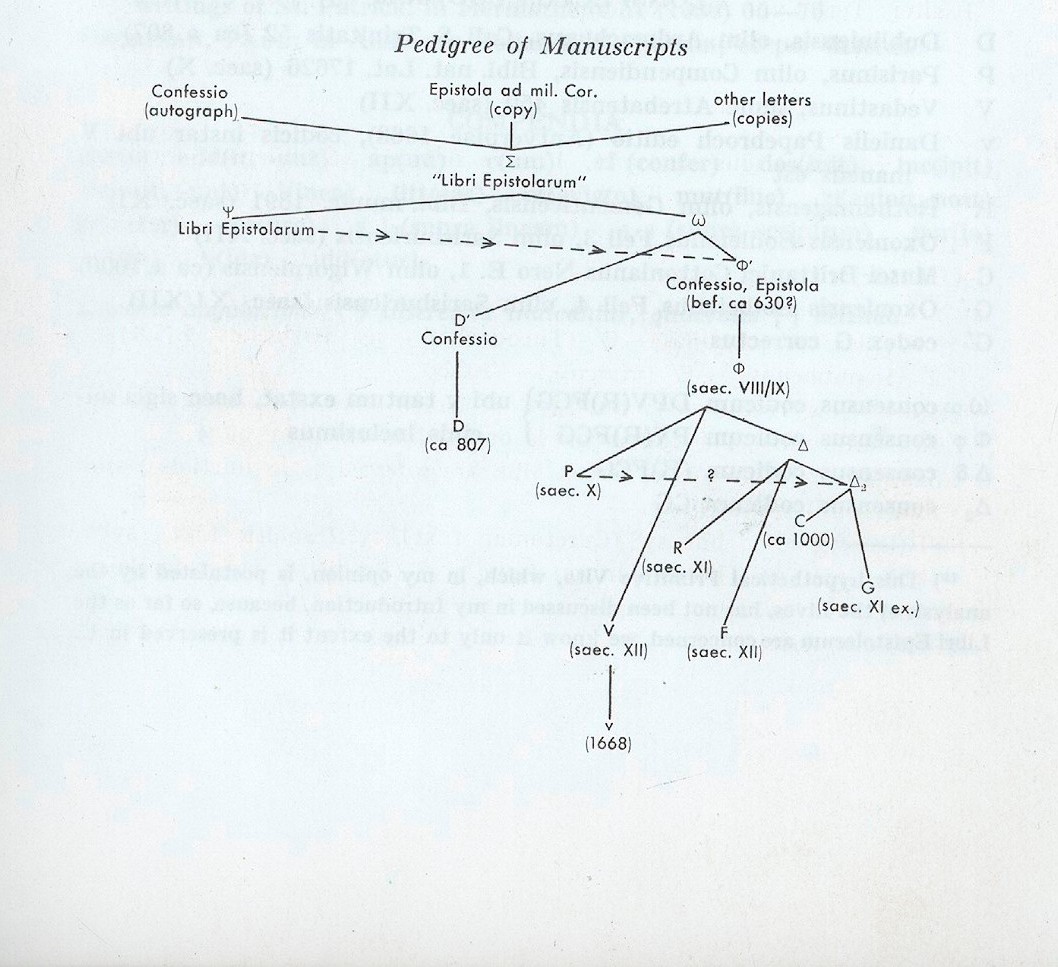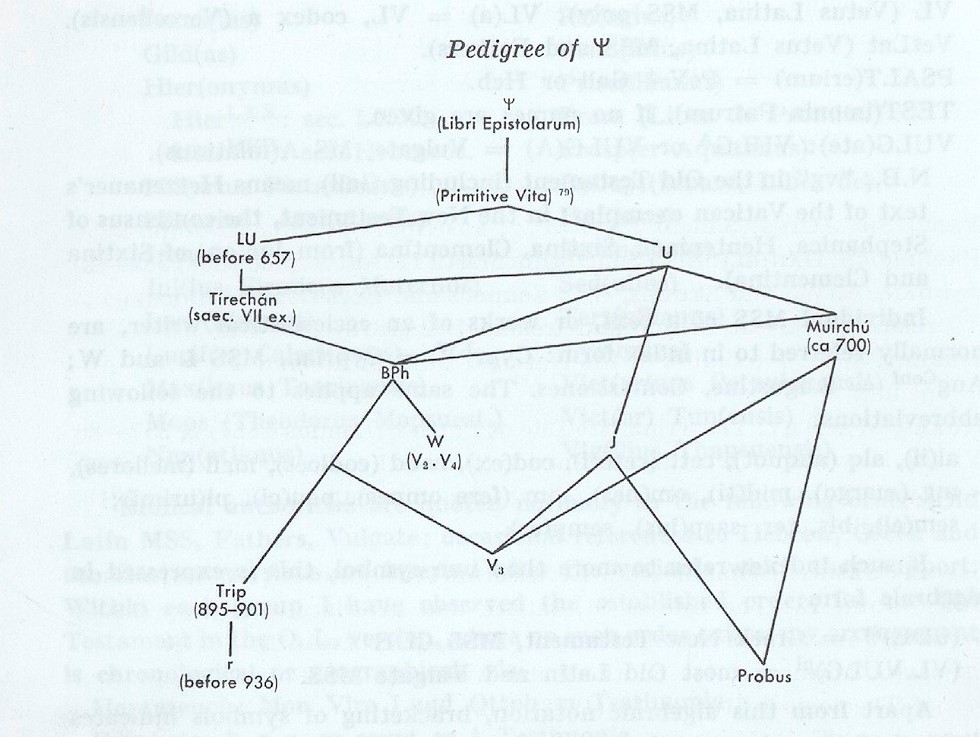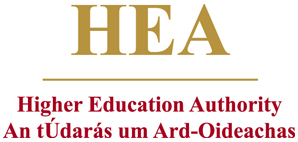4. Primary sources referenced
For a brief overview of ancient authors, their respective works and the abbreviations commonly used see Wikipedia (German).
- ADAMNÁN; cf. Wikipedia article; De locis sanctis; cf. Wikipedia article.
- AELIUS SPARTIANUS; cf. Wikipedia article; Vita Hadriani; cf. online version on the Ancient History Sourcebook website.
- AELIUS LAMPRIDIUS; cf. Wikipedia article; Severus Alexander; cf. online version of the "Historia Augusta".
- AETHERIA [= Egeria]; cf. Wikipedia article; Peregrinatio Aetheria; cf. online version on "The Latin Library" website. See also bibliographic entry on Löfstedt (1911).
- SEXTUS IULIUS AFRICANUS; cf. Wikipedia article.
- AMBROSIUS MEDIOLANENSIS; cf. Wikipedia article; Epistolae, De Consolatione Valentiniani, De Nabuthae, Apud Lanfrancum, De Officiis Ministrorum; eds. Opera Omnia CSEL edition Schenkl, Expositio de psalmo CXVIII CSEL edition Petschenig, Liber de consolatione Valentiniani by Kelly.
- AMBROSIASTER; cf. Wikipedia article; ed. by Vogels (1966) in the CSEL series. See also bibliographic entry on Souter (1905).
- AMMIANUS MARCELLINUS; cf. Wikipedia article.
- ANASTASIUS; cf. Wikipedia article; Epistolae; available online on the Documenta Catholica Omnia website.
- ANNALS OF INNISFALLEN; cf. Wikipedia article; online version available on the CELT project website. See also bibliographic entries on Walsh 1936, Smyth 1972, Ó Buachalla 1958 and 1959.
- ANNALS OF ULSTER; cf. Wikipedia article; online version available on the CELT project website. See also bibliographic entries on Walsh1936, Smyth 1972, Mac Airt 1983, Hennessy 1887-1891, Ó Buachalla 1958 and 1959.
- ANON. RAVENN. = Ravennatis Anonymi Cosmographia; cf. Wikipedia article. For further information see also the respective entry on the RBO website.
- ANTHIMUS; cf. Wikipedia article.
- ITINERATIO ANTONINI; cf. Wikipedia article. For further information see also the respective entry on the RBO website.
- APOPHTHEGMATA PATRUM; cf. Wikipedia article.
- APULEIUS; cf. Wikipedia article; Metamorphoses, Florida; "Apulei Opera" available online on "The Latin Library" website. PSEUDO-APULEIUS; Asclepius; cf. Wikipedia article (Latin), Wikipedia article (Hermetica) .
- ARNOBIUS IUNIOR; cf. Wikipedia article.
- ARRIAN [= Lucius Flavius Arrianus 'Xenophon']; cf. Wikipedia article; Cynegeticus; cf. Wikipedia article. XENOPHON OF ATHENS; cf. Wikipedia article; Hellenica.
- AUGUSTINUS [= Augustine of Hippo]; cf. Wikipedia article; Contra Adimantum, Confessiones, De Doctrina Christiana, De Genesi ad literam, De beata vita, Sermones, Epistolae, Quaestiones de Heptateucho, De civitate dei, De catechizandis rudibus; eds. Maurists' edition 1679-1700, edition Mai 1842, PL edition Migne 1845 and 1863, CSEL editions Weihrich 1887, Goldbacher 1895 and 1904, CSEL edition Petschenig 1909, edition Christopher 1926, edition Morin 1930, CCSL edition Dombart/Kalb 1955, CCSL editions Munier 1974 and Verheijen 1981. PSEUDO-AUGUSTINUS; Sermones, Quaestiones.
- BEDE [= Beda Venerabilis]; cf. Wikipedia article; Historia ecclesiastica gentis Anglorum; cf. Wikipedia article, available online on "The Latin Library" website. Ed. Hervagius 1563.
- BELL. APR. [?]
- BOETHIUS [= Anicius Manlius Severinus Boëthius]; cf. Wikipedia article; Consolatio Philosophiae; cf. Wikipedia article.
- CAESAR [= Gaius Julius Caesar]; cf. Wikipedia article; Commentarii de Bello Gallico, Commentarii de Bello Civili, De Bello Alexandrino, De Bello Africo, De Bello Hispaniensi.
- CANONUS HIBERNENSIS [= Collectio canonum Hibernensis, Irish Collection of Canon law], ed. MacCarthy The Collectio canonum Hibernensis; cf. Wikipedia article.
- CASSIAN; cf. [= Saint John Cassian]; cf. DNB, Wikipedia article; Conlatio, Institutes, Contra Nestorium; eds. CSEL edition Petschenig 1886, Institutions Cénobitiques Sources Chrétiennes edition 1965.
- CASSIODORUS [= Flavius Magnus Aurelius Cassiodorus Senator]; cf. Wikipedia article; Institutiones.
- CATO (cf. Wikipedia article) in ISIDORUS HISPALENSIS [= Isidor of Sevilla]; cf. Wikipedia article; De differentiis rerum, in PL 83, cols. 69-98.
- CATULLUS [= Gaius Valerius Catullus]; cf. Wikipedia article.
- CELERINUS; cf. Wikipedia article.
- CHARISIUS [= Flavius Sosipater Charisius]; cf. Wikipedia article, Ars grammatica.
- PETRUS CHRYSOLOGUS; cf. Wikipedia article, Sermones.
- JOHN CHRYSOSTOM; cf. Wikipedia article, Homilies.
- CICERO [= Marcus Tullius Cicero]; cf. Wikipedia article, Epistulae ad Quintum Fratrem, Epistulae ad Atticum, In Verrem, De Finibus, Cato Maior de Senectute, De Inventione, Philippicae, Pro Balbo, De Legibus, De Officiis, Pro Flacco; complete works available online on Perseus.
- SENATUS CONSULTUM DE BACCHANALIBUS; cf. Wikipedia article.
- CLAUDIAN [= Claudius Claudianus]; cf. Wikipedia article, Panegyricus dictus Probino et Olybrio consulibus.
- CLEMENS ALEXANDRINUS [= Titus Flavius Clemens, Clement of Alexandria]; cf. DNB, Wikipedia article; Stromata; cf. Wikipedia article.
- VITA COLMANI; cf. Wikipedia article.
- COLUMELLA [= Lucius Junius Moderatus Columella]; cf. Wikipedia article.
- COMMODIAN; cf. Wikipedia article; Instructiones, Carmen apologeticum.
- CONCHUBRANUS; Vita s. Monennae.
- CYPRIAN; [= Thascius Caecilius Cyprianus] cf. DNB, Wikipedia article; Ad Demetrianum, De dominica oratione, Epistulae, Ad Fortunatum, De habitu virginum, De mortalitate, De bono patientae, Ad Quirinum testimonia adversus Judaeos, De catholicae ecclesiae unitate, Epistola ad Donatum de gratia Dei, Epistolae, De Lapsis; full texts available online on the Cyprian Project website. PSEUDO-CYPRIAN; cf. Wikipedia article.
- DICTYS; cf. Wikipedia article.
- DIGESTA; cf. Wikipedia article.
- DIOMEDES; cf. Wikipedia article.
- DRACONTIUS [= Blossius Aemilius Dracontius]; cf. Wikipedia article, De laudibus Dei.
- ENNEADES; cf. Wikipedia article.
- ENNODIUS [= Magnus Felix Ennodius]; cf. Wikipedia article.
- GESTA EPHESENA; Acta Conciliorum Oecumenorum I (ed. E. Schwartz, Berlin, Leipzig, 1927)
- FLAVIUS ERVIGIUS [= Erwig]; cf. Wikipedia article, Decretum Flauii Eruigii regis pro concilio Toletano.
- EUCHERIUS [= Eucherius of Lyon]; cf. Wikipedia article.
- EUGIPPIUS; cf. Wikipedia article, Vita s. Seuerini. English translation available on the Tertullian Project website.
- EURIPIDES; cf. Wikipedia article, Andromache. Available online in English and Greek on Perseus.
- EUAGRIUS (Athanasius) [= Evagrius of Antioch]; cf. Wikipedia article, Vita S. Antonii.
- ACTA ss. PERPETUAE ET FELICITATIS. Available online on the Tertullian Project website.
- FILASTRIUS; cf. Wikipedia article.
- VALERIUS FLACCUS; cf. Wikipedia article.
- FLAVIUS VOPISCUS; cf. Wikipedia article, Carus, Aurelian, Tacitus.
- VITA S. FURSEI; cf. Wikipedia article.
- GARGILIUS MARTIALIS; cf. Wikipedia article.
- GAUDENTIUS [= Gaudentius of Brescia]DNB, Wikipedia article.
- GELLIUS [= Aulus Gellius]; cf. Wikipedia article.
- VIRGILIUS MARO GRAMMATICUS; cf. Wikipedia article.
- GREGORIUS TURONENSIS [= Saint Gregory of Tours]; cf. Wikipedia article, Historia Francorum, available on the Latin Library website, Liber in Gloria Confessorum, Liber in Gloria Martyrum, Liber Vitae Patrum.
- HEGESIPPUS; cf. Wikipedia article.
- HER. [?]
- HESYCHIUS; cf. Wikipedia article.
- HIERONYMUS [= Eusebius Sophronius Hieronymus]; cf. Wikipedia article. Vita Hilarionis, Epistolae.
- HILARIUS ARELATENSIS [= Hilary of Arles]; cf. Wikipedia article. Sermo de s. Honorato
- HIRTIUS; cf. Wikipedia article.
- HISTORIA AUGUSTA; cf. Wikipedia article; Clodius Albinus, Trebellius Pollio, Tyranni
- HONORIUS; cf. Wikipedia article.
- HORACE [= Quintus Horatius Flaccus]; cf. Wikipedia article; Epodes.
- IORDANIS [= Jordanes], cf. Wikipedia article; ed. by Mommsen (1882).
- IUL. CAPIT. Gord. [?]
- IUSTINIANUS [= Flavius Petrus Sabbatius Iustinianus Augustus]; cf. Wikipedia article; Institutiones, Codex Iustinianus, Novellae, Edictio.
- LIB. IUBIL. [= Liber Jubilaeorum, Leptogenesis]; cf. Wikipedia article.
- LACTANTIUS [= Lucius Caecilius Firmianus Lactantius]; cf. Wikipedia article.
- LAELIUS; cf. Wikipedia article.
- LEO MAGNUS [= Pope Leo I.]; cf. Wikipedia article, Sermones.
- LIVY [= Titus Livius]; cf. Wikipedia article.
- LUCRETIUS; cf. Wikipedia article.
- LUCIAN [= Saint Lucian of Antioch, Lucian the Martyr]; cf. Wikipedia article.
- LUTATIUS [= Quintus Lutatius Catulus]; cf. Wikipedia article, Epigram.
- BOOK OF MALACHI; cf. Wikipedia article
- MARTIANUS CAPELLA [= Martianus Minneus Felix Capella]; cf. Wikipedia article.
- Merovingian Charter; cf. Wikipedia article.
- MINUCIUS FELIX [= Marcus Minucius Felix]; cf. Wikipedia article; Octavius; cf. Wikipedia article.
- ST. MOCHTA; cf. Wikipedia article. See bibliographic entries on Walsh (1921), Adomnan's Life of Columba by Anderson & Anderson and Early Medieval Ireland: 400-1200 by Ó Cróinín (1995) as well as list entry on the Annals of Ulster.
- MONTANUS; cf. Wikipedia article, Actus Montani.
- MULOMEDICINA CHIRONIS; cf. Wikipedia article (German).
- NEPOS; cf. Wikipedia article; Themistocles, De regibus, Hannibal. Full text of Vitae available online on the Perseus website.
- NICAENUM [= Symnolum Nicaenum, Nicene Creed]; cf. Wikipedia article.
- PAULINUS NOLANUS [= Paulinus of Nola]; cf. Wikipedia article; Carmina.
- OCTATEUCH; cf. Wikipedia article.
- ONASANDER; cf. Wikipedia article; Strategikos (Στρατηγικός).
- OPTIMUS, cf. Wikipedia article
- ORIBASIUS; cf. Wikipedia article; Synopsis.
- ORIENTIUS; cf. Wikipedia article; Commonitorium, Carmina.
- ORIGENES; cf. [= Origen Adamantius]; cf. Wikipedia article; PSEUDO-ORIGENES [= Adamantius]; cf. Wikipedia article.
- OROSIUS; cf. Wikipedia article; Historiae.
- PALLADIUS [= Palladius of Galatia]; cf. Wikipedia article; Historia Monachorum in Aegypto.
- PAPINIANUS [= Aemilius Papianus]; cf. Wikipedia article.
- PAULA; cf. Wikipedia article.
- PAULINUS MEDIOLANENSIS [= Paulinus the Deacon]; cf. Wikipedia article; De benedictionibus patriarcharum.
- JULIUS PAULUS PRUDENTISSIMUS; cf. Wikipedia article.
- PENTATEUCH [= Torah]; cf. Wikipedia article.
- PETRONIUS; cf. Wikipedia article.
- PHIL. CONS. [?]
- CREED OF PHILIPPOPOLIS; cf. Wikipedia article.
- PLATO; cf. Wikipedia article; Cratylus; cf. Wikipedia article.
- PLAUTUS [= Titus Maccius Plautus]; cf. Wikipedia article; Asinaria, Epidicus, Amphitryon, Stichus, Bacchides.
- PLINY [= Gaius Plinius Secundus, Pliny the Elder]; cf. Wikipedia article; Epistolae, Naturalis Historia.
- IULIUS POMERIUS [= Julianus Pomerius]; cf. Wikipedia article; De vita contemplativa.
- POMPONIUS; cf. Wikipedia article; Digest.
- PORPHYRIO [= Pomponius Porphyrius]; cf. Wikipedia article.
- PRIMASIUS[= Primasius of Hadrumetum]; cf. Wikipedia article.
- PROBUS; cf. Wikipedia article.
- QUEROLUS; cf. Wikipedia article.
- QUINTILIAN [= Marcus Fabius Quintilianus]; cf. Wikipedia article. PSEUDO-QUINTILIAN; Declamationes Maiores.
- REGULA BENEDICTI; cf. Wikipedia article.
- REGULA MAGISTRI; cf. Wikipedia article.
- REMIGIUS OF AUXERRE; cf. Wikipedia article.
- RIGALTIUS; cf. Wikipedia article.
- RUFINUS [= Tyrannius Rufinus, Rufinus Aquileiensis]; cf. Wikipedia article; Recognitiones, Basilii homilies.
- RURICIUS; cf. Wikipedia article; Epistolae.
- SALVIANUS; cf. Wikipedia article.
- SCHOLIUM AESCHINES; cf. Wikipedia article.
- BERNENSE SCHOLIA; cf. Wikipedia article.
- SCHOLIUM BOBIENSE
- SECUNDINUS [= Saint Sechnall]; cf. Wikipedia article.
- SEDULIUS [= Coelius Sedulius, Caelius Sedulius]; cf. Wikipedia article; Carmen paschale.
- SENECA [= Lucius Annaeus Seneca]; cf. Wikipedia article; Tragoediae, Epistolae, Dialogi, De beneficiis.
- SIDONIUS [= Gaius Sollius (Modestus) Apollinaris Sidonius, Saint Sidonius Apollinaris]; cf. Wikipedia article; Epistolae.
- SILIUS ITALICUS [?]; cf. Wikipedia article.
- SOLINUS [= Gaius Julius Solinus]; cf. Wikipedia article.
- VITA SOLLEMNIS; available online on the MGH website.
- STRABO; cf. Wikipedia article.
- SUETON [= Gaius Suetonius Tranquillus]; cf. Wikipedia article; De Vita Caesarum; cf. Wikipedia article.
- SULPICIUS SEVERUS; cf. Wikipedia article; Vita S. Martini, Chronica, Dialogi.
- SYMBOLUM APOSTOLORUM/APOSTOLICUM [= Apostles' Creed]; cf. Wikipedia article.
- SYMBOLUM ATHANASIANUM [= Athanasian Creed]; cf. Wikipedia article.
- SYMBOLUM NICAENUM [= Nicene Creed]; cf. Wikipedia article.
- SYNODUS CARTHAG [= Synods of Carthage]; cf. Wikipedia article.
- TACITUS [= Publius (or Gaius) Cornelius Tacitus]; cf. Wikipedia article; Historiae, Annales, Dialogus.
- TE DEUM; cf. Wikipedia article.
- TERENCE [= Publius Terentius Afer]; cf. Wikipedia article; Adelphoe; cf. Wikipedia article.
- TERTULLIANUS [= Quintus Septimius Florens Tertullianus]; cf. Wikipedia article; Adversus Praxeam, De Velandis Virginibus, Apologetica, De Oratione, Adversus Marcionem, Adversus Judaeos, Ad Uxorem, De Puditicia, De corona, De Testimonio Animae, De Cultu Feminarum, Ad Nationes. See bibliographic entries on Das neue Testament Tertullians by Rönsch (1871), edition Oehler (1853), CSEL editions Reifferscheid (1890) and Kroymann (1906), CCSL edition Waszink (1954) also.
- THEODORETUS; cf. Wikipedia article.
- TRYPHONIUS; cf. Wikipedia article; Digesta.
- ULPIANUS [= Gnaeus Domitius Annius Ulpianus]; cf. Wikipedia article.
- IULIUS VALERIUS [= Julius Valerius Alexander Polemius]; cf. Wikipedia article.
- VARRO [= Marcus Terentius Varro]; cf. Wikipedia article; Rerum rusticarum, De Lingua Latina.
- VEGETIUS [= Publius Flavius Vegetius Renatus]; cf. Wikipedia article.
- VENANTIUS FORTUNATUS [= Venantius Honorius Clementianus Fortunatus]; cf. Wikipedia article; Vita Paterni.
- VERGIL [= Publius Vergilius Maro]; cf. Wikipedia article; Aeneid.
- S. BRIGIDA; Vita III s. Brigidae 48 (MS Brit. Mus. Addit. 34124, saec. IX med); cf. Wikipedia article.
- VICTOR VITENSIS; cf. Wikipedia article.
- VITRUVIUS; cf. Wikipedia article; De Architectura; cf. Wikipedia article.







